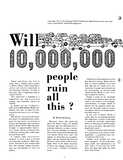
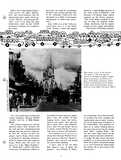
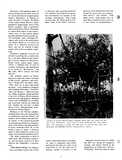
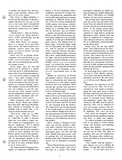
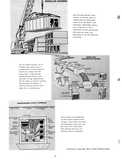
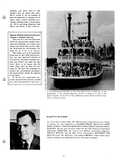
[reprint from National Wildlife, 1971-06/07]
[Abstract]
National Wildlife Federation Director Thomas L. Kimball sums up:
"This will be a real test before the world – to demonstrate whether planning and technology can create a new urban area where man can live without destroying his environment. He must do so if he is to survive.
"The added cost of environmental protection on this $300-million project was only about $15 million, or five percent. If a profit-oriented company like Disney can make the plan work, there is no reason why the same thing can't be done all over America. We have the techniques to protect our environment; developers and governments should be required to use them.
"If the Disney experiment succeeds – and only time will tell – it could be a big step forward for all of us."
Future generations may find it ironic that a company whose symbol is Mickey Mouse should undertake a serious and massive experiment in environmental planning. Yet that is precisely what is happening today in central Florida.
This experiment is unfolding in a magnificent area with untouched swamps and uncounted species of wildlife.
In October the new, 27,400-acre, $300-million Walt Disney World near Orlando will open its gates for your inspection and approval-or disapproval.
Walt Disney's successors have done just about everything that time, talent, good will and money can provide to nurture the high hopes their late boss had for Disney World. What they have wrought is unquestionably impressive. Disney World, as distinct from California's Disneyland, is not simply an amusement park.
It contains many innovations designed to solve a host of current environmental problems. Other projected innovations give promise that they will someday enhance the planning and development of cities yet unborn.
Moreover, those who guide and guard the Disney legacy are making decisions that may ultimately have a profound influence on mass recreation. Current estimates are that between eight and ten million people will visit Disney World every year. The manner in which they are accommodated, and the imprint they leave on the area, seem certain to have a profound effect on the future decisions of those who manage America's increasingly crowded recreational areas.
California's Disneyland has proved that Florida's Disney World will be able to control pollution on its own land. But just as a large city's concentration of people puts pressure on the environment, so will the urban sprawl Disney World is sure to attract around its borders.
Though it would not be reasonable to oppose a recreation project just because it will attract a lot of people, concentrations of people should be figured into the equation which balances the desirable aspects of mass recreation with the accompanying undesirable aspects.
In the case of Disney World, it seems that its recreational potential and experience in better living make it worth the inevitable undesirable effects of attracting 10 million people per year to one place. But many local people don't agree:
"I think we have the right in Florida to be suspicious of any project of this magnitude,' a prominent local conservationist said to me.
[…]
| Id | 5461 |
|---|---|
| Availability | Free |
| Inserted | 2020-10-12 |